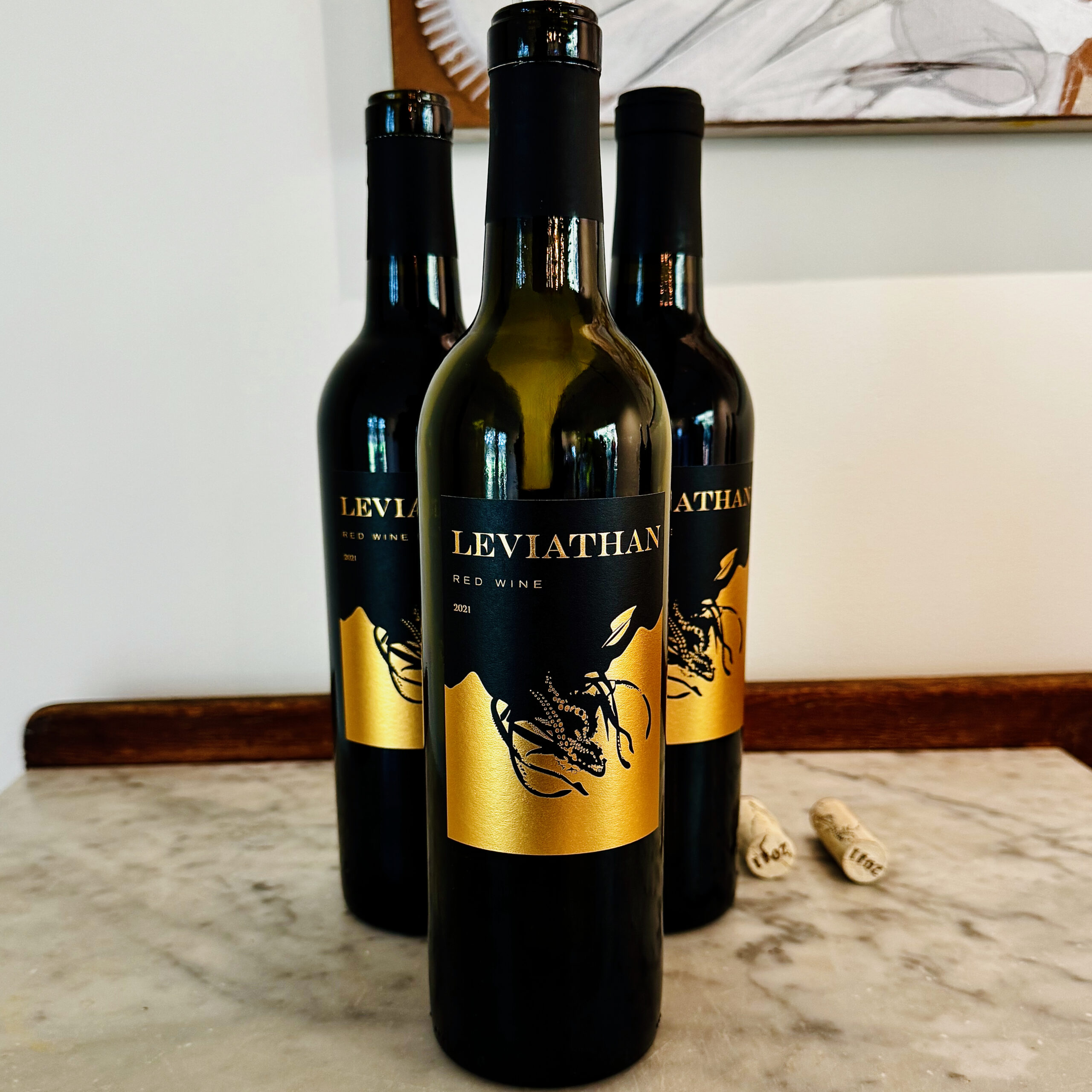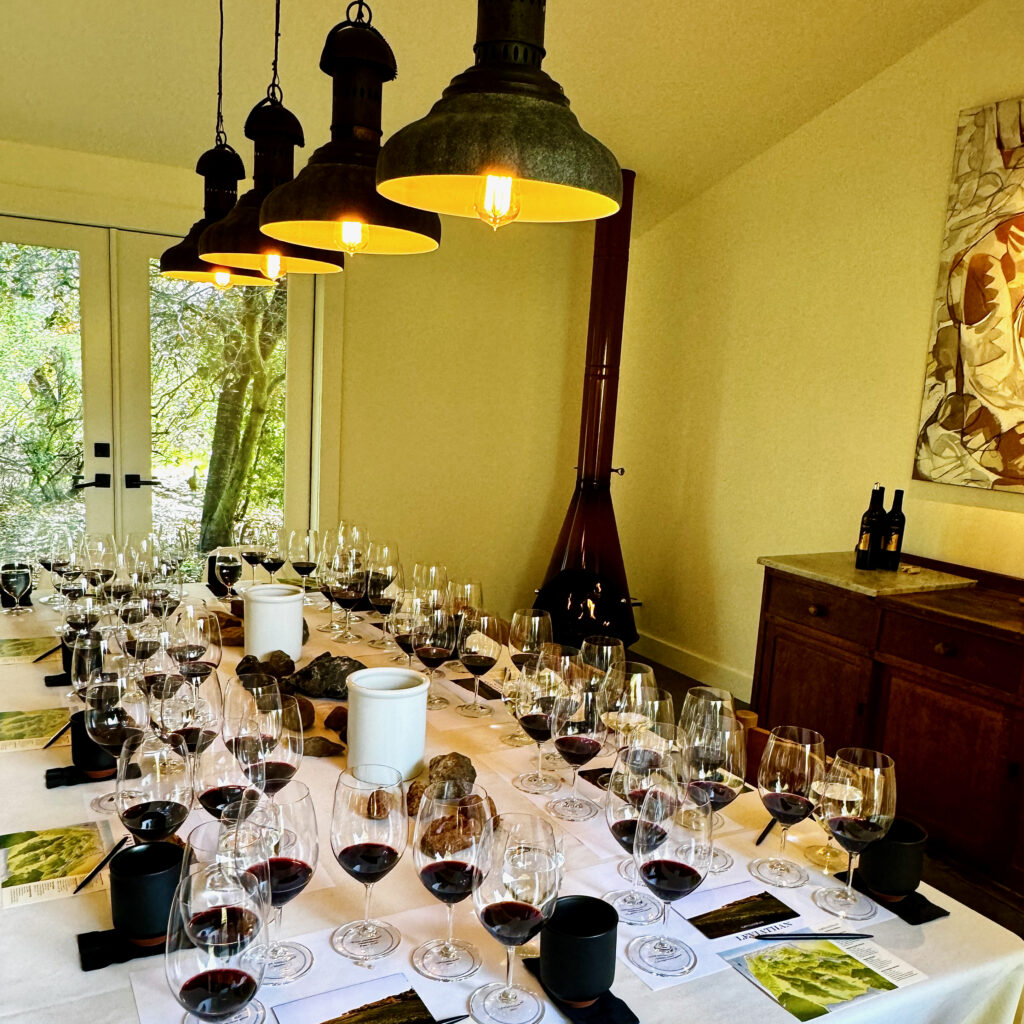Component tasting highlights the contributions four wines make to the finished blend.
A recent media tasting of the 2021 Leviathan California Red Wine, a Cabernet-based blend of Bordeaux and other grapes from multiple appellations, began with sips of four component wines from three counties. Unlike the high-priced Napa Valley Cabernet Sauvignons associated with winemaker Andy Erickson, among them his own Favia Oakville Cab, the Leviathan wine retails at $40 retail, beyond a good value.

The session took place at Erickson’s ranch in Coombsville (Napa Valley). Guided by Erickson and Nicole Hayden, grower relations manager for Huneeus Vintners (Leviathan is a Huneeus brand), we sampled two Cabernets, a Merlot, and a Petite Sirah – all 2022s from neutral oak barrels – to learn how each contributes to the final blend. The grapes came from four vineyards in three counties.

The soil types and growing conditions vary widely, even within the same appellation, as is the case with the Cabernet and Petite Sirah, both from Lake County’s Red Hills AVA (American Viticultural Area). Wild Diamond Vineyard lives up to its name with actual diamonds amid the soil.

The tannins in the two Lake County wines were prominent but in different ways: the Cabernet’s more straightforward and punchy, and the Petite’s, as Erickson noted, rounder. As was also the case with the lean and juicy Merlot (nice acidity) from Coombsville, not far from where we were tasting, one could easily imagine each wine’s role.

After tasting the four components, we moved on to the 2021, whose grapes came from the same four vineyards plus several others. As intended, it’s lush and pretty. None of the grapes that went into the 2011 we enjoyed for comparison came from the above four vineyards, but the older wine, still lively after a dozen years, was made in generally the same manner.
Per a Leviathan social media post, here’s the goal when blending: “Cabernet Sauvignon brings structure and character, whilst Petite Sirah gives the density and weight. Syrah adds notes of chocolate, mocha, and a dark, soft, long finish, and Merlot provides the plushness and juiciness we’re aiming for in every sip.”

Leviathan doesn’t have a tasting room, but Hayden said the 2021 Leviathan California Red Wine is on restaurant lists, and many wine shops carry the blend.
